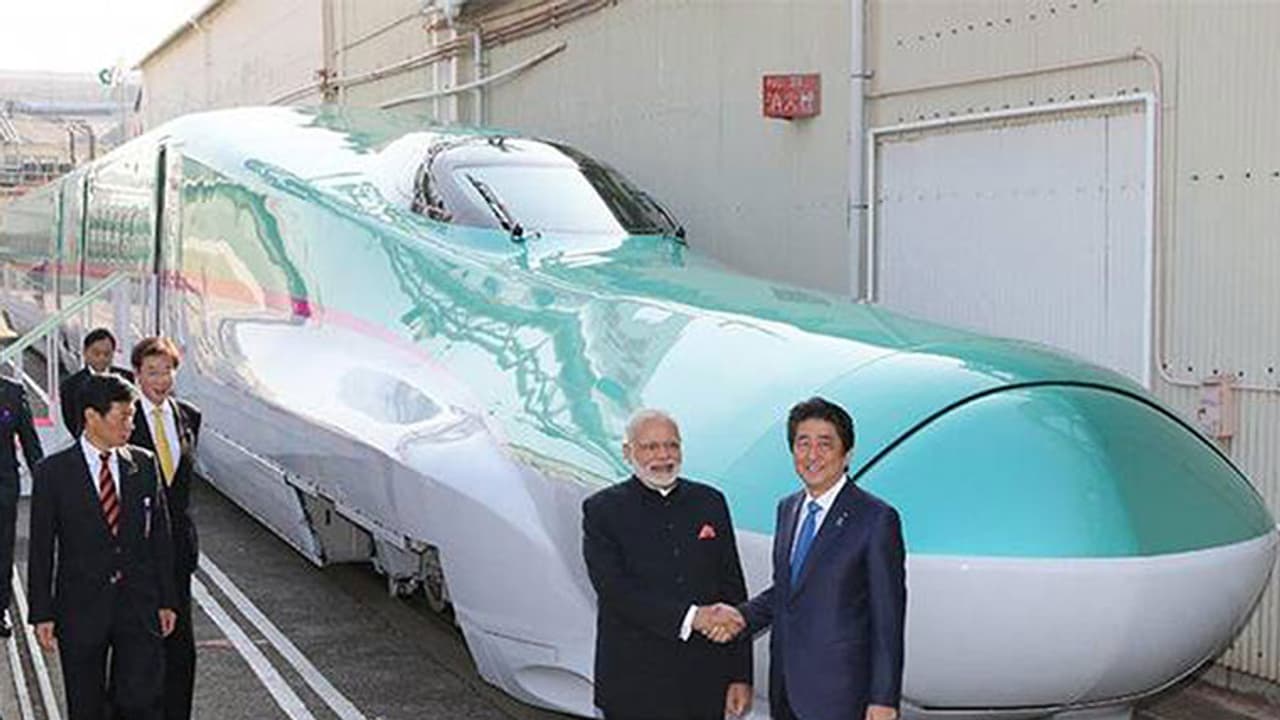There have been 586 train accidents in the past 5 years. Of them nearly 53% were due to derailments. India could have saved close to $3.2 billion on construction of the Mumbai-Ahmedabad bullet train system if it had invited bids instead of awarding the project to Japan on a nomination basis.
After the launch of the $17 billion bullet train project between Ahmedabad and Mumbai, the Railway ministry is likely to launch a new Rajdhani train between Delhi and Mumbai, which is likely to cut down travel time by 2 hours. This is going to be the third Rajdhani train on the route, in the next few months.

The new train, which is likely to be launched by Diwali this year will cover the distance between Bandra (in Mumbai) and Nizamuddin station in Delhi) in 13 hours.
Presently, the route is served by two Rajdhani Express trains- the August Kranti Rajdhani and the Mumbai Central-New Delhi Rajdhani. Incidentally, both of them take more than 15 hours to cover a distance of 1,377 km. Inside sources also suggest that the railways could introduce the new Rajdhani with 14 coaches and one engine to ramp up the speed and then determine which of the two is a better option. It is said that the Linke Hoffman Busch (LHB) coaches that would be used in the coaches are superior in design and reduces the chance of derailment and mitigates the possibility of grievous injury or death in case of accidents. These coaches also have anti-climbing features and provision of superior braking.
Incidentally, the bullet train too has superior safety features to avoid accidents and hi-tech design to ensure a safe passage from one city to another. While the bullet train has a sanctioned two layer speeding system-high speed and trapid high speed, the Rajdhani express will be travelling at a speed of 130 kmph. In view of this, it remains to be seen whether our present infrastructure would be able to sustain these speeding machines.
Revamping the present infrastructure, an option?
According to a Times of India report, there have been 586 train accidents in the past 5 years. Incidentally, of them nearly 53% were due to derailments. The worst of them being the Indore-Patna Express derailment near Kanpur last year, which resulted in 150 deaths and over 150 injuries.
The above-mentioned data calls for serious attention of the authorities who could have concentrated on building up the existing infrastructure rather than building up fresh infrastructure. In a report by the wire.in, India could have saved close to $3.2 billion on construction of the Mumbai-Ahmedabad bullet train system if it had invited bids instead of awarding the project to Japan on a nomination basis. Enough money for revamping the present infrastructure in the railways.
Not just railways, many more sectors need government's attention
India ranks 134 in the World Bank's Global ranking, with a per capita GDP of $1709, far below countries like Singapore, Malaysia, Indonesia, and Thailand that also aspire for bullet trains. Indonesia, which comes closest to India among all these countries, has a per capita GDP of $3,570, which is more than double that of India.
Incidentally, the country's healthcare and education infrastructure, which are important for India's sustainable growth, need massive investment to cope with the growing demand.
Questions on the viability of the bullet project
Even if we consider the feasibility of the Rajdhani Express, the viability of the bullet train project is questionable. Given the high fare, which is estimated to be between Rs 3,000 to Rs 5,000, the bullet train has to compete with airlines in the same route, which will limit its ability to raise fares and enough revenues. Moreover the burden of repaying the loan amount offered by Japan for 50 years would further dig into the exchequer.
All said and done, it feels incredible to see India in the growth path. But, considering the existing infrastructure in railways that is battling broken tracks and faulty signal management, the viability of something bigger and better seems to be a distant future.
